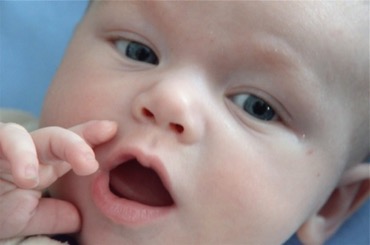IS OUR 4-MONTH OLD TEETHING ALREADY

Interestingly, experts disagree on whether teething has any symptoms at all. Some say you can expect;
Drooling
Low fever
Gum swelling and sensitivity
Biting motions
A desire to chew on everything
Fussiness
Refusing food
Sleep problems
Diarrhea
Others say this may well just be a coincidence. But if you see symptoms like fever or diarrhea, you should consult your pediatrician.
To relieve the pain for a teething baby, give him or her a cold wash cloth to chew on, or a hard rubber teething ring. You can even chill it but don't freeze it. If your child is old enough to eat, try applesauce or yogurt. Even rubbing your finger firmly but gently across her gums at two- minute intervals
Rubbing the gums with a topical ointment is also an option but you should talk to your pediatrician first. Sometimes, the ointment can get back into the throat and numb the area that triggers the cough reflex. This is necessary for when a baby' drool works it's way into a baby's throat and needs to be cleared.
What's cool is that you can also relieve the pain by simply distracting the child by rocking, cuddling or talking to him. By playing music or reading a story.
If your baby is like most and has excessive drooling, avoid dehydration by replacing lost fluids with diluted juice or water. Also, keep your baby's face and clothes dry to prevent rashes or irritation. A bib is great way to help protect clothing from wetness.
blog comments powered by Disqus